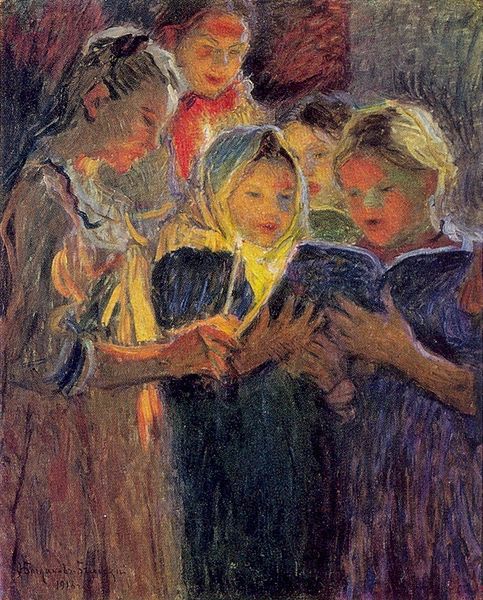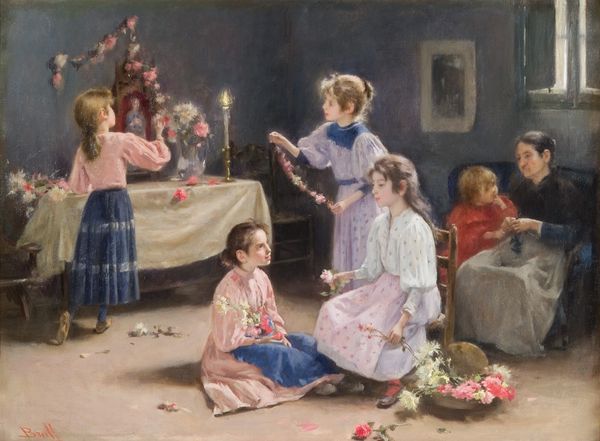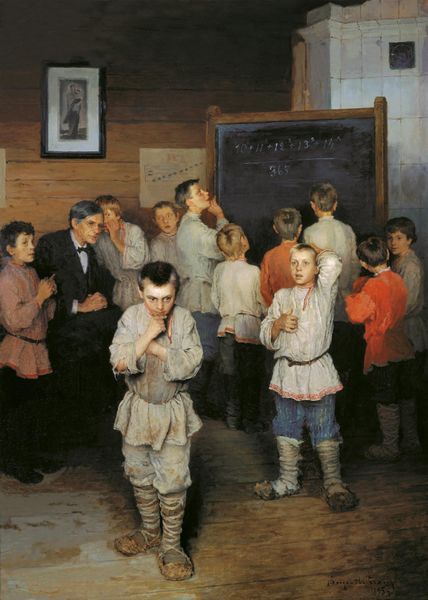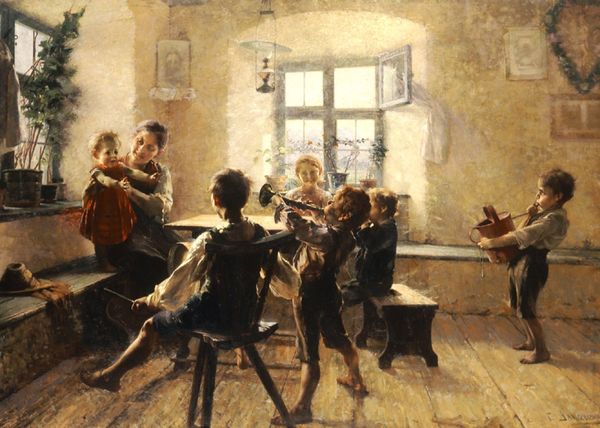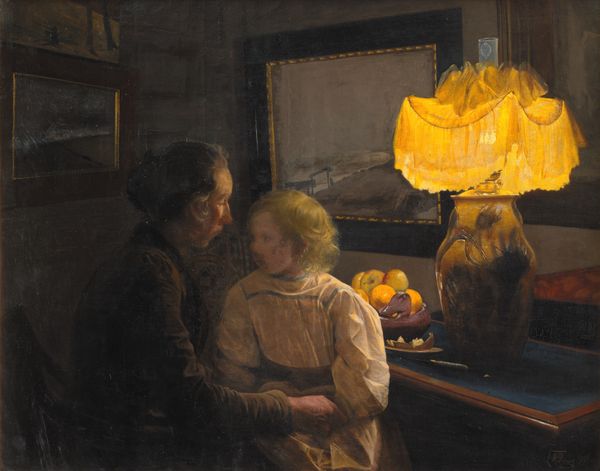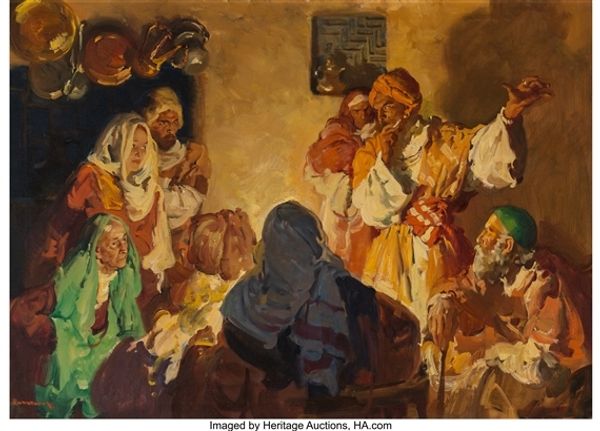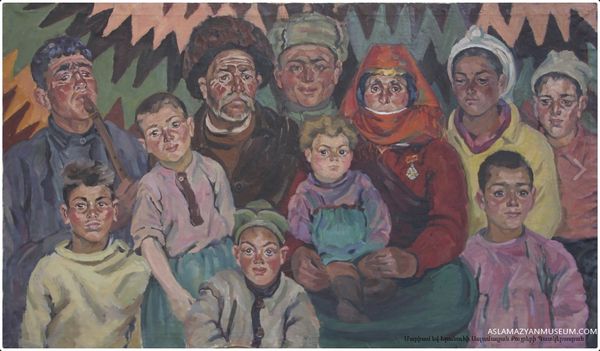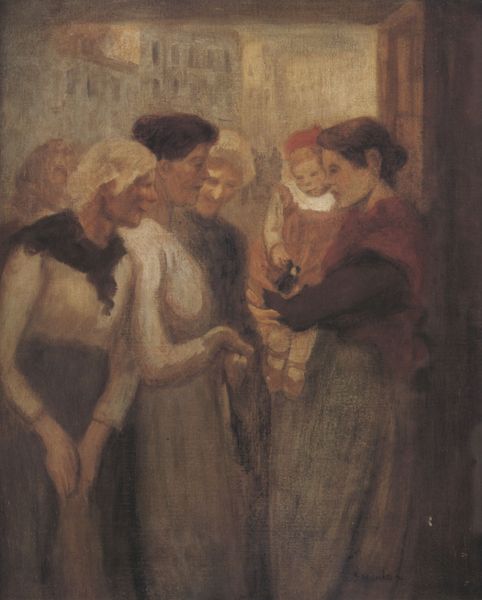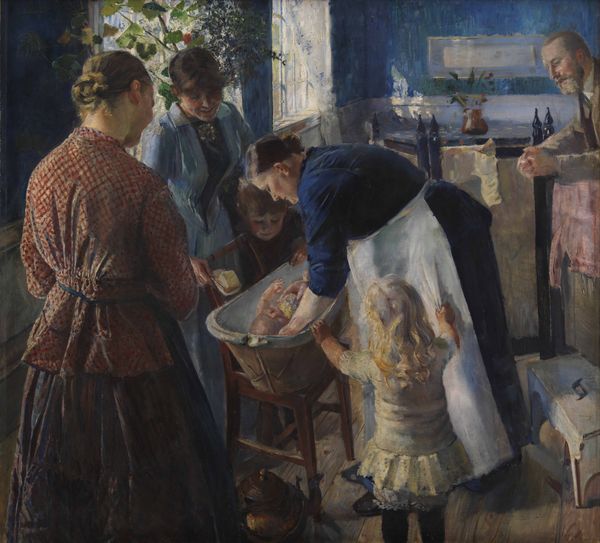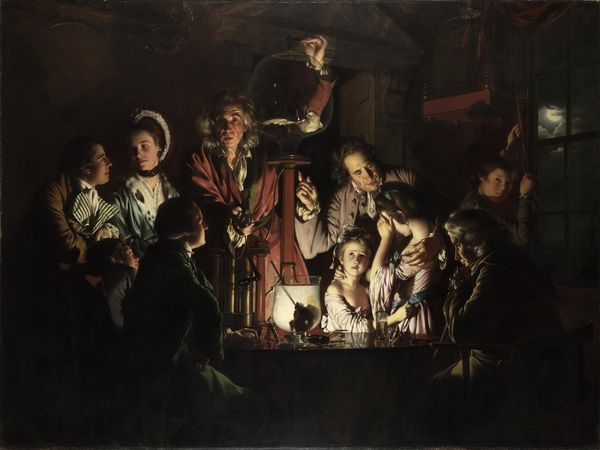
Copyright: Public domain
Curator: “In the Church” by Nikolay Bogdanov-Belsky, painted in 1939, appears to depict children holding candles, possibly during a religious service. The somber mood is enhanced by the limited color palette and what seems to be visible brushwork. What grabs your attention most about this piece? Editor: I'm intrigued by the depiction of what seems like the materiality of labour. The visible brushstrokes, the somewhat drab clothing of the children, and even the rough texture of the church walls – they all seem to contribute to the social and economic environment suggested in the image. What is your take on the artist's material handling here? Curator: Precisely. Notice how Bogdanov-Belsky doesn't try to smooth over the details. The materiality points to a certain authenticity. The children's worn clothing, the humble beeswax candles, even the application of the oil paint itself - thickly layered in some areas, thinly in others - speaks to a world far removed from idealized depictions. It subtly acknowledges the economic realities shaping these children’s lives. Where do you think the production of materials, like paint pigments or canvas, plays a role? Editor: That makes me think about how access to higher quality materials itself reflects economic privilege. I'm guessing Bogdanov-Belsky’s choice of perhaps more readily available or less refined materials highlights the economic standing of his subjects, which is then interwoven with religious themes. That's something I hadn't immediately considered. Curator: Exactly! And think about the labor involved in creating these pigments, grinding them, preparing the canvas – it's all tied to social conditions and the means of artistic production. By showing the hand of the artist, the labor of creation becomes part of the artwork's narrative itself. Do you find this alters your initial interpretation of the scene’s meaning? Editor: It does! I initially focused on the image's quiet reverence. However, looking closer at the materials, like you suggest, it reveals layers about 1930s Soviet-era labor and wealth disparity that would have been invisible otherwise. This opens up a lot to consider. Thanks. Curator: A work gains deeper resonance when we analyze not just what it depicts, but also how it came into being. Thank you for considering this.
Comments
No comments
Be the first to comment and join the conversation on the ultimate creative platform.
